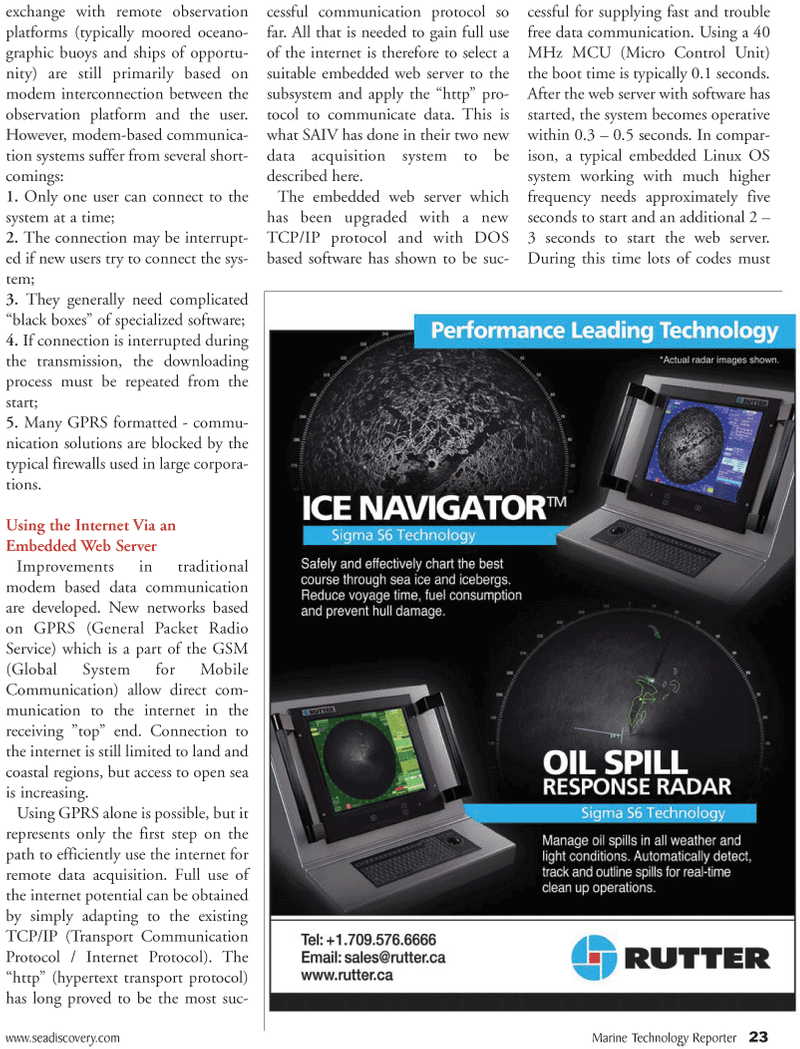
Page 23: of Marine Technology Magazine (April 2011)
Oil & Gas SubSea Monitoring
Read this page in Pdf, Flash or Html5 edition of April 2011 Marine Technology Magazine
www.seadiscovery.com Marine Technology Reporter 23 exchange with remote observation platforms (typically moored oceano- graphic buoys and ships of opportu- nity) are still primarily based on modem interconnection between the observation platform and the user.
However, modem-based communica- tion systems suffer from several short- comings: 1. Only one user can connect to the system at a time; 2. The connection may be interrupt- ed if new users try to connect the sys- tem; 3. They generally need complicated “black boxes” of specialized software; 4. If connection is interrupted during the transmission, the downloading process must be repeated from the start; 5. Many GPRS formatted - commu- nication solutions are blocked by the typical firewalls used in large corpora- tions.
Using the Internet Via an
Embedded Web Server
Improvements in traditional modem based data communication are developed. New networks based on GPRS (General Packet Radio
Service) which is a part of the GSM (Global System for Mobile
Communication) allow direct com- munication to the internet in the receiving ”top” end. Connection to the internet is still limited to land and coastal regions, but access to open sea is increasing.
Using GPRS alone is possible, but it represents only the first step on the path to efficiently use the internet for remote data acquisition. Full use of the internet potential can be obtained by simply adapting to the existing
TCP/IP (Transport Communication
Protocol / Internet Protocol). The “http” (hypertext transport protocol) has long proved to be the most suc- cessful communication protocol so far. All that is needed to gain full use of the internet is therefore to select a suitable embedded web server to the subsystem and apply the “http” pro- tocol to communicate data. This is what SAIV has done in their two new data acquisition system to be described here.
The embedded web server which has been upgraded with a new
TCP/IP protocol and with DOS based software has shown to be suc- cessful for supplying fast and trouble free data communication. Using a 40
MHz MCU (Micro Control Unit) the boot time is typically 0.1 seconds.
After the web server with software has started, the system becomes operative within 0.3 – 0.5 seconds. In compar- ison, a typical embedded Linux OS system working with much higher frequency needs approximately five seconds to start and an additional 2 – 3 seconds to start the web server.
During this time lots of codes must

 22
22

 24
24
